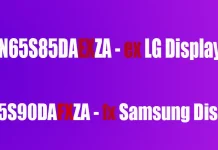The words below the video that give information about the dialogues in the movie can be very helpful, especially if you have hearing problems, if you are watching a video in a foreign language, or if you just don’t want to miss anything.
However, many people are still confused about what to call the dialogue visualizations: subtitles or captions.
Although linguistically these two words can be used as synonyms, you should still understand that they have semantic differences.
What’s subtitles
Subtitles are a common name for visualizing dialogues and are used in most English-speaking countries and even in other European languages.
Subtitles can be in the same language as the video or in a foreign language. Semantically, subtitles primarily refer to dialogue visualizations that are aimed at people who are watching content in a foreign language.
What’s captions
Captions is a rendering of dialogs and this name is used mostly in North America. Unlike subtitles, captions are aimed at people with hearing difficulties. This means that captions help them watch the content in case they cannot hear the voice.
Captions can be opened or closed.
Closed Captioning (usually abbreviated to CC) is a visualization of the voice content that contains not only the dialogues but also a visualization of the entire scene, including the song lyrics, a description of the sounds that accompany the picture and, of course, the dialogues themselves. The captions help the hearing impaired understand all of the content, not just the pictures and dialogues.
Opened Captioning only includes visualizations of the dialogs.






